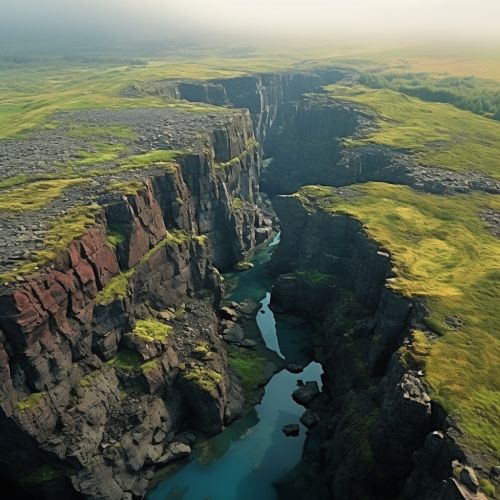Mid-Atlantic Ridge
Introduction
The Mid-Atlantic Ridge (MAR) is a mid-ocean ridge, a divergent tectonic plate or constructive plate boundary located along the floor of the Atlantic Ocean, and part of the longest mountain range in the world. In the North Atlantic, it separates the Eurasian and North American Plates, and in the South Atlantic, it separates the African and South American Plates. The Ridge extends from a junction with the Gakkel Ridge (Mid-Arctic Ridge) northeast of Greenland towards the Bouvet Triple Junction in the South Atlantic.
Geology
The Mid-Atlantic Ridge is a classic example of an Oceanic spreading ridge. Oceanic spreading ridges are sites where new oceanic crust is formed by volcanic activity and then gradually moves away from the ridge. The creation of new seafloor and the movement of crustal plates is described by the theory of Plate tectonics, which explains the large-scale geodynamic features of the Earth.


Morphology
The Mid-Atlantic Ridge includes a deep rift valley that runs along the axis of the ridge along nearly its entire length. This rift marks the actual boundary between adjacent tectonic plates, where magma from the mantle reaches the seafloor, erupting as lava and producing new crustal material for the plates.
Hydrothermal vents
The Mid-Atlantic Ridge is home to an array of hydrothermal vents, which support a variety of unique ecosystems. These vents, also known as black smokers, are areas where seawater circulates through the oceanic crust, becoming superheated and saturated with dissolved minerals before being ejected through the seafloor.
Exploration
The Mid-Atlantic Ridge was first discovered in the 1950s during the course of military and scientific research and mapping efforts. The discovery of the ridge led to the theory of seafloor spreading and contributed to the development of the theory of plate tectonics.
